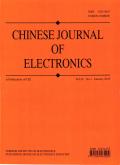基于多模态交叉注意机制的老年人行为监测和识别算法
IF 1.6
4区 计算机科学
Q3 ENGINEERING, ELECTRICAL & ELECTRONIC
引用次数: 0
摘要
与一般人群相比,老年人的行为识别具有更高的特异性和难度,这使得老年人安全监测系统的可靠性和可用性更具挑战性。因此,本研究提出一种基于多模态感知的老年安全监控识别系统解决方案。该方法引入了一种基于多模态交叉注意机制的识别算法,创新性地融合了场景背景和语音等复杂信息,实现了更准确的行为识别。通过融合图像、骨骼、传感器数据和音频四种模式,进一步提高识别的准确性。此外,我们还引入了一种新的人机交互模式,在这种模式下,系统将直接识别的意图与机器人的动作联系起来,而无需明确的命令,从而提供更自然、更有效的老年人援助范例。这种模式不仅提高了对老年人的安全监控水平,而且促进了一种更自然、更有效的护理方式。实验结果表明,与现有方法相比,对11种典型老年人行为的识别准确率有了显著提高。本文章由计算机程序翻译,如有差异,请以英文原文为准。
Multimodal Cross-Attention Mechanism-Based Algorithm for Elderly Behavior Monitoring and Recognition
In contrast to the general population, behavior recognition among the elderly poses increased specificity and difficulty, rendering the reliability and usability aspects of safety monitoring systems for the elderly more challenging. Hence, this study proposes a multi-modal perception-based solution for an elderly safety monitoring recognition system. The proposed approach introduces a recognition algorithm based on multi-modal cross-attention mechanism, innovatively incorporating complex information such as scene context and voice to achieve more accurate behavior recognition. By fusing four modalities, namely image, skeleton, sensor data, and audio, we further enhance the accuracy of recognition. Additionally, we introduce a novel human-robot interaction mode, where the system associates directly recognized intentions with robotic actions without explicit commands, delivering a more natural and efficient elderly assistance paradigm. This mode not only elevates the level of safety monitoring for the elderly but also facilitates a more natural and efficient caregiving approach. Experimental results demonstrate significant improvement in recognition accuracy for 11 typical elderly behaviors compared to existing methods.
求助全文
通过发布文献求助,成功后即可免费获取论文全文。
去求助
来源期刊

Chinese Journal of Electronics
工程技术-工程:电子与电气
CiteScore
3.70
自引率
16.70%
发文量
342
审稿时长
12.0 months
期刊介绍:
CJE focuses on the emerging fields of electronics, publishing innovative and transformative research papers. Most of the papers published in CJE are from universities and research institutes, presenting their innovative research results. Both theoretical and practical contributions are encouraged, and original research papers reporting novel solutions to the hot topics in electronics are strongly recommended.
 求助内容:
求助内容: 应助结果提醒方式:
应助结果提醒方式:


